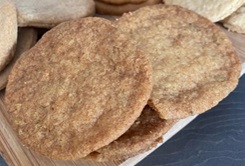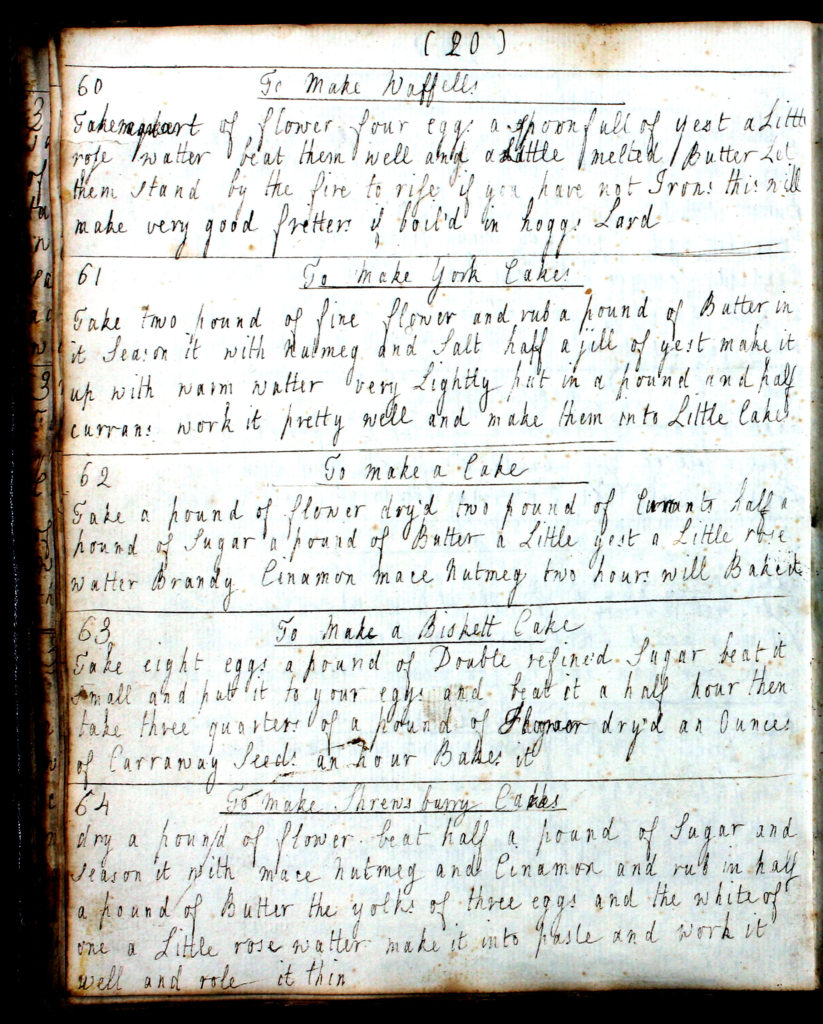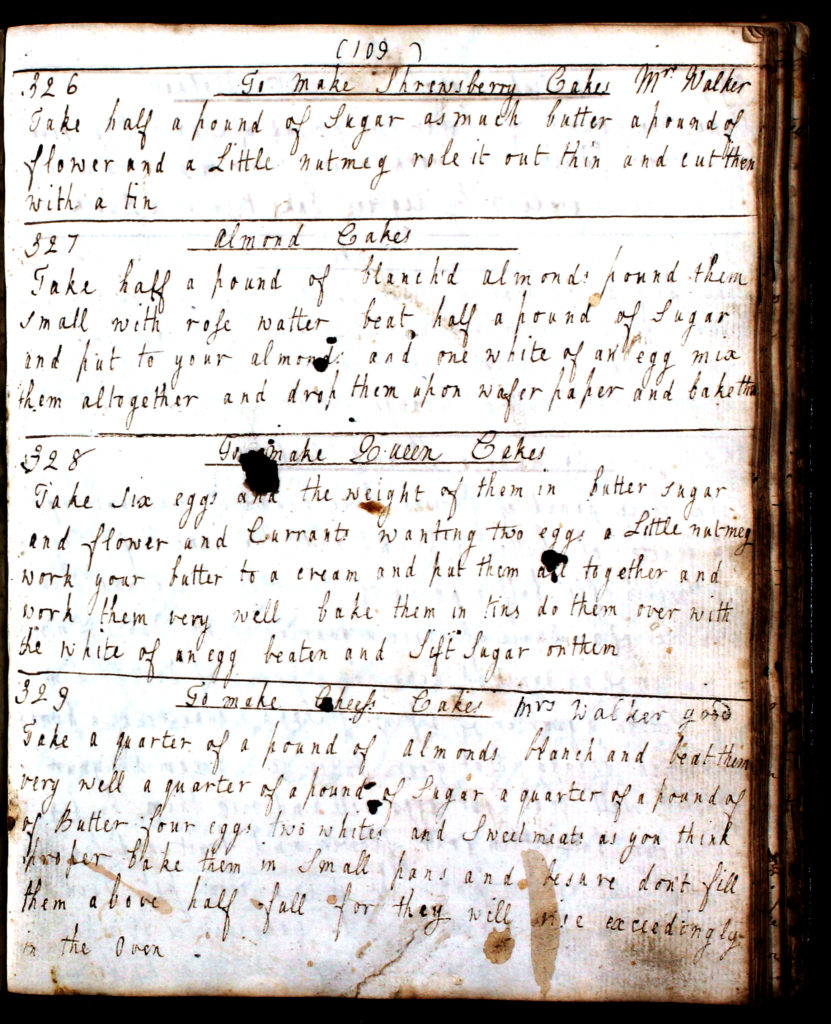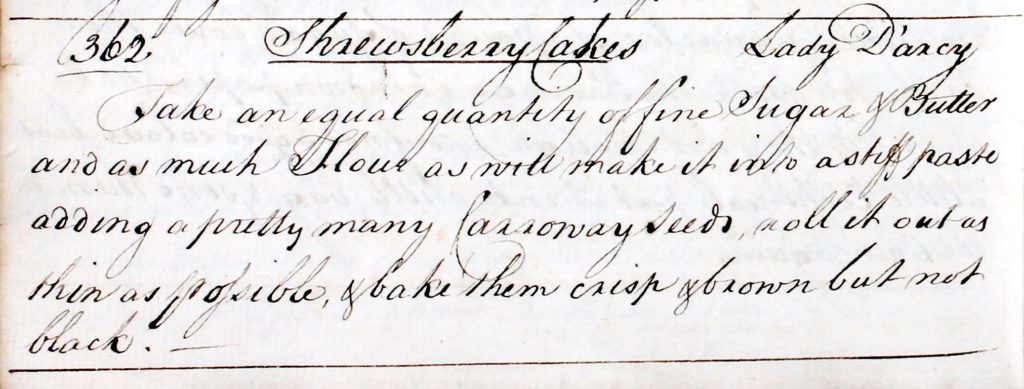Family recipe books with Bridget Atkinson
BRIDGET ATKINSON’S RECIPE BOOK, 1760-1770, REFERENCE: ZAL 85/2 PAGES 20, 109 and 122
ZAL 85/2 P.20
ZAL 85/2 P.109
THE AUTHOR
Although it was originally thought that this cookbook was compiled by Margaret Widdrington (nee Allgood) , it has now been identified through research and comparison of the handwriting to have been written by Bridget Atkinson nee Maughan (1732 – 1814) of Temple Sowerby in Cumbria. Bridget was raised in Kirkoswald in Cumberland and married George Atkinson in 1758. She had ten children, 8 of whom survived. She collected shells, loved books and was also a keen and practical hands on farmer. In 1813, shortly before her death she was made the first Honorary member of the Society of Antiquaries of Newcastle upon Tyne which still exists today. One of her daughters married into the Clayton family of Chesters in Northumberland.

Bridget has written out most of the recipes in the book, however, her brother in law, Matthew Atkinson has also copied in some as well which are recognisable because of his different style of handwriting.
The Allgood family tree can be seen in the Allgood family pedigree.
🔍Have a look at the Allgood family tree, can you find Margaret Allgood and Hannah Glasse?
📚Try reading Bridget’s recipe book. Is it easy to read?
🗣 Read the page out loud. Does this make it easier to understand?
🔍Can you spot the difference between Bridget and Matthew’s handwriting?
✏ Have a go at comparing your handwriting to a friend or family-member’s handwriting. What are the differences?
FAMILY RECIPE BOOKS
In the 18th century wealthy families would often have a handwritten book of recipes which were used in their household. These recipes would be prepared by cooks. The books contained a mixture of savoury and sweet recipes for everyday meals and entertaining for special occasions. By our standards, the ingredients seem very large amounts but families would have been larger and included servants. Many of the recipes would have been gathered over a long period, some of them collected when visiting other families or attending events.
To the modern reader, these recipes are difficult to follow as they give few instructions on how to create the dish and do not indicate precise temperatures or times for cooking.
As well as recipes, the books often contain “cures” or suggested remedies for various ailments. This was very common. In her letters to her aunt, Margaret Widdrington, Hannah Glasse mentions a cure for the plaque as well as a Lewers tincture she intends to sell in London and further afield. Similar recipe books gave Hannah Glasse the idea for her publication – the Art of Cookery Made Plain and Easy (1747) – which contained not only her own recipes but those gathered from others. Her cookery book became a reference book for many cooks in the late 18th and 19th centuries.
💡Do you have a family recipe book?
💡How do people find and collect recipes today?
💡Does your family have any special recipes?
🔍Can you find where or who your family recipes came from?
✏ Can you make a recipe book like Bridget and Hannah Glasse using your family’s favourite recipes?
LADY DARCY’S SHREWSBURY CAKES
Shrewsbury cakes, or Shrewsbury biscuits, are a sweet English treat named after the town of Shrewsbury in Shropshire. They are made using a sweet dough, and often have different spices, fruits and nuts added to them. Bridget’s book includes two recipes for Shrewsbury cakes as well as this third one which her brother in law, Matthew Atkinson is thought to have copied into the book. It came originally from Lady Darcy.

👩🍳Have a go at making Lady Darcy’s Shrewsbury cakes. How do they taste?
✏ Can you re-write the recipe so that it includes measurements, an oven temperature and baking time? What other changes would you make?
👩🍳Have a go at making your own version of Shrewsbury cakes. What ingredients will you add?
👩🍳Can you make and rewrite any more of the recipes from Bridget’s book?




